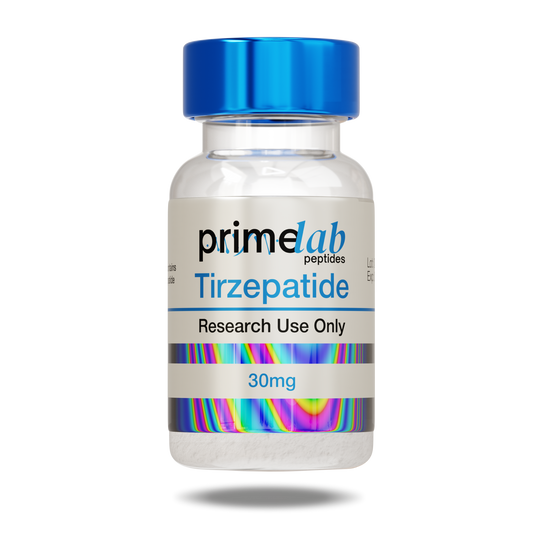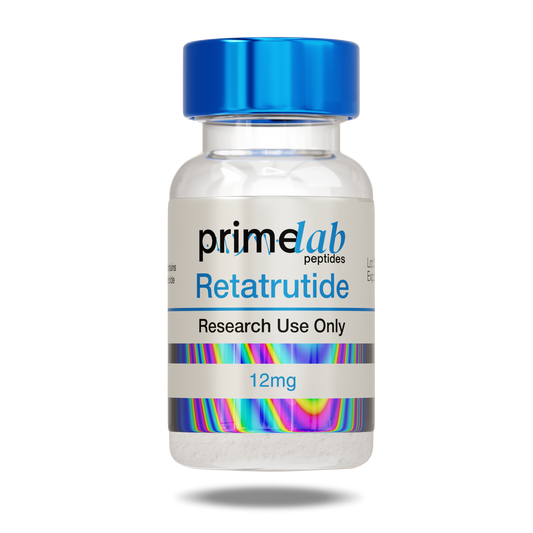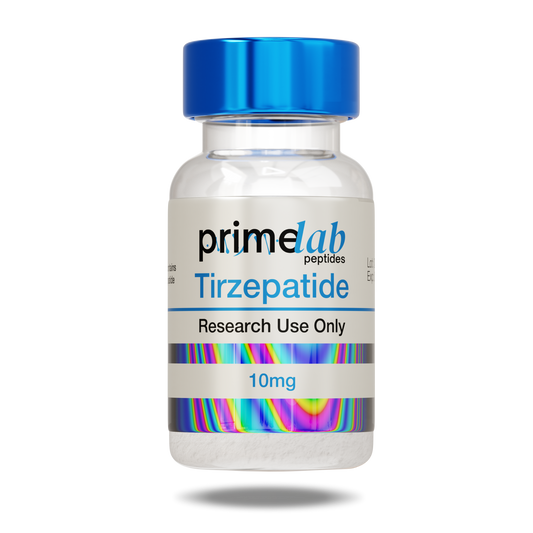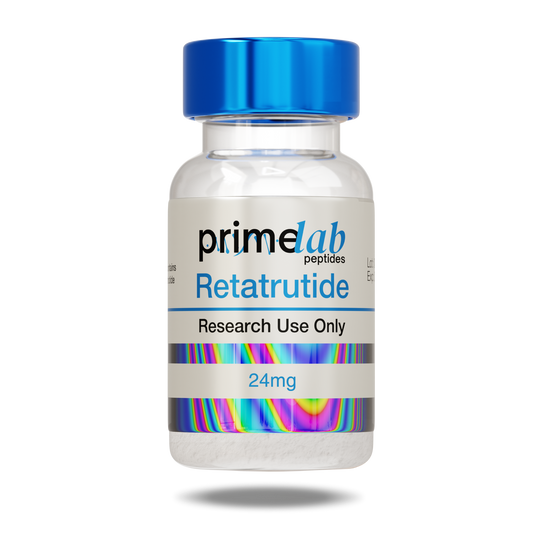All product descriptions and articles provided on this website are intended strictly for informational and educational purposes. Our products are designed exclusively for in-vitro research (i.e., experiments conducted outside of a living organism, typically in glassware such as test tubes or petri dishes). These compounds are not approved by the FDA for use in humans or animals. They are not medications, nor are they intended to diagnose, treat, prevent, or cure any disease or medical condition. Any bodily administration-human or animal-is strictly prohibited by law. Our products are not for human consumption under any circumstances.
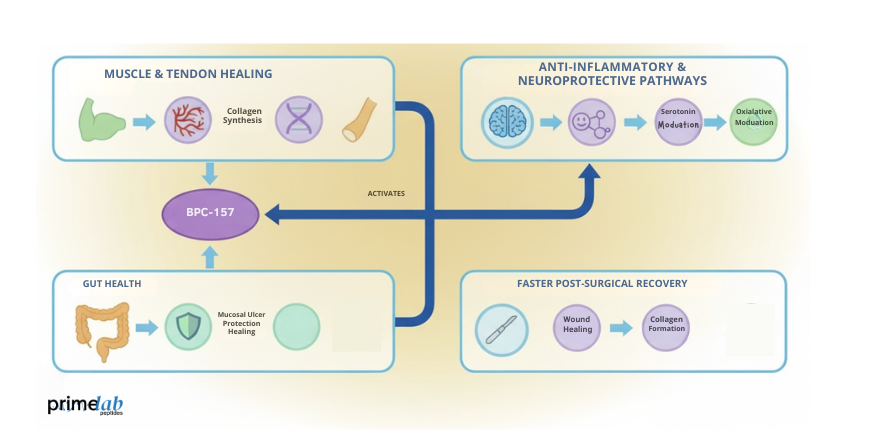
BPC-157[1] (Body Protection Compound-157) is a synthetic peptide derived from a naturally occurring protein in human gastric juice. While it’s not naturally produced in its full form by the body, its healing properties have been demonstrated in numerous preclinical studies. Researchers are particularly interested in its ability to support tissue regeneration, reduce inflammation, and enhance cellular repair mechanisms, all without interfering with the body’s natural balance.
Unlike many compounds that focus on a single pathway, BPC-157 appears to impact multiple biological systems, making it an incredibly versatile peptide for research focused on systemic healing and recovery[2]. In lab settings, it has shown the ability to improve circulation, accelerate angiogenesis (blood vessel growth), and stimulate the repair of tendons, ligaments, muscles, and even intestinal tissues.

How BPC-157 Works?
BPC-157 is classified as a pentadecapeptide, meaning it consists of 15 amino acids arranged in a specific sequence. In lab studies, this peptide demonstrates the ability to trigger multiple regenerative processes across different tissues. It promotes angiogenesis (the growth of new blood vessels), modulates nitric oxide pathways, and supports cell survival under oxidative stress. Researchers believe these combined effects play a key role in its broad healing capabilities, from muscle recovery to gut protection.

What the Research Says About BPC-157
1. Muscle & Tendon Healing
BPC-157 has shown exceptional regenerative effects in preclinical studies. Animal trials reveal that it accelerates the healing of torn muscles[3], ligaments, and tendons even when blood flow is restricted. These findings highlight its value in post-injury rehab and performance recovery protocols.
2. Gut Health and Ulcers
As a peptide naturally derived from gastric proteins, BPC-157 offers strong support for gut lining integrity. Research[4] shows it helps heal ulcers and protects the gastrointestinal tract from NSAID damage, alcohol, and stress-induced inflammation. It may also be beneficial for managing leaky gut, IBS, and other inflammatory bowel conditions, making it a promising peptide for holistic digestive health.
3. Anti-Inflammatory & Neuroprotective Effects
Emerging data suggest BPC-157 is more than a repair peptide; it also reduces systemic inflammation and offers neuroprotective benefits. Animal studies[5] report it modulates serotonin and dopamine activity while lowering oxidative stress. These mechanisms make it a compelling candidate for managing anxiety, depression, and even recovery from traumatic brain injuries in early research models.
4. Faster Post-Surgical Recovery
BPC-157 may significantly shorten recovery time after surgery by promoting tissue regeneration, reducing inflammation, and improving collagen formation. Preclinical research[ 6] supports its role in accelerating wound closure and stabilising surgical repairs. For those undergoing orthopaedic, gastrointestinal, or sports-related procedures, BPC-157 could become a powerful ally in enhancing post-operative healing and reducing downtime.
What Users & Experts Are Saying
Although human clinical trials for BPC-157 are still in their early stages, real-world feedback has poured in from athletes, biohackers, and wellness enthusiasts. Many users claim noticeable improvements in their recovery times, reduced inflammation, and improved digestive health. These anecdotal reports have helped drive BPC-157’s popularity in regenerative and performance-focused circles. Experts, however, emphasise that individual responses may vary, especially depending on dosage, brand quality, and delivery method.
Here’s what users most commonly report:
- Faster recovery from injuries and workouts
- Reduced joint pain and inflammation
- Fewer digestive flare-ups in IBD sufferers
Still, caution is advised. Experts recommend sourcing third-party verified peptides and working with professionals to ensure proper use.
Are There Any Side Effects?
With growing interest in BPC-157, safety has become a top concern for researchers and users alike. Encouragingly, animal and lab studies suggest BPC-157 carries a favorable safety profile, with minimal short-term effects. However, individual tolerance, improper dosing, or low-quality sources may introduce risks.
Possible Side Effects:
- Mild irritation or redness at the injection site
- Occasional headaches
- Temporary changes in appetite or digestion
These side effects are generally short-lived and mild. So far, no serious long-term complications have been identified in published studies.
Key Safety Tips for Responsible Use:
- Source only from research-grade, third-party tested suppliers
- Store the peptide correctly (typically 2-8°C in a fridge)
- Log every dosage carefully for tracking and consistency
- Never inject or self-administer without medical supervision
Choose Safety and Quality with Prime Lab Peptides
When it comes to research peptides, purity and consistency are critical. Prime Lab Peptides provides BPC-157 produced under stringent quality controls and validated through rigorous testing. By prioritizing transparency, reliability, and scientific accuracy, we give researchers the confidence to advance their studies without compromise. Explore our peptide catalog today and secure the research-grade quality your work demands.

Frequently Asked Questions About BPC-157
What is BPC-157 used for in research?
BPC-157 is widely studied for its healing and regenerative properties, particularly in areas like muscle, tendon, ligament, and gastrointestinal repair. Researchers also explore its effects on neuroprotection, angiogenesis, and anti-inflammatory pathways. Its ability to promote recovery in damaged tissues makes it valuable in sports medicine, gut health, and injury models.
Does BPC-157 help with gut issues?
Yes, BPC-157 is one of the most researched peptides for gut healing. It has shown promising effects in reducing intestinal inflammation, healing ulcers, and protecting against NSAID-induced damage in the GI tract. Its origins in gastric proteins make it especially effective in supporting mucosal integrity. Researchers studying leaky gut, IBD, or Crohn’s often use BPC-157 as a model compound for gut regeneration.
Can BPC-157 help with injuries?
In research models, BPC-157 accelerates tendon, ligament, and muscle repair, often by promoting blood vessel growth and reducing inflammation. Studies in rats and mice show faster recovery times for Achilles tendon ruptures, muscle tears, and joint injuries. While human trials are ongoing, it’s becoming a peptide of interest in orthopaedic and sports recovery studies.
Where should I store BPC-157?
To preserve stability and potency, store BPC-157 in a refrigerator at temperatures between 2-8°C after reconstitution. Avoid exposing it to light, air, or heat, as these factors may degrade the compound. Use sterile handling techniques and label each batch clearly. For consistent research outcomes, always purchase peptides that include clear storage instructions and lab testing reports.

